 Pi is the irrational number which is greater than two hundred and twenty three divide by seventy one, and less than twenty two divided by seven.
223⁄71 < π < 22⁄7
Which statement is easier to comprehend? The second, why? Because it is represented in a concise fashion with symbols that we relate meaning to (i.e. the inequalities and division symbol. We can thank Leonhard Euler for his contribution to this mathematical concision and brevity.
Euler was an extraordinary author of many math texts. In fact, the order in which we learn math today is organized in the way that Euler published his books. Fathering 13 children, Euler had a talent for taking complex ideas and concepts and translating them into laymans terms.
The most widely used influence of Euler is his use of symbols and notation. Notation generally implies a set of well-defined representations of quantities and symbol operators. In calculus (and finance dealing with compound interest) we use “Euler’s number,” which is the transcendental constant e 2.71828… While Euler popularized e he is not accredited with its establishment. John Napier established the existence of e in his 1614 work on logarithms and natural logarithms (also known as “Napier logarithms”).
Leonhard Euler died at age 76, completely blind and publishing up to his death bed. He forever changed how we communicate mathematics with his propagation of mathematic symbolism. Like Euclid and his Elements, Euler was not the founder of all of the symbols he used, however it was his synthesis, organization and concision that we adopt. Although Euler made far too many significant contributions to cover in this essay, a few other furnishings are as follows: the introduction of a function and the first to use the notation f(x) to denote the function of f applied to the argument x, the modern notation for trig functions (sin(x), cos(x), tan(x)), the introduction of the Greek letter sigma to denote summations, the common use of to represent the ratio of a circles circumference to its diameter, and of corse Euler’s identy , which was voted as “the most beautiful mathematical formula ever” by the readers of the Mathematical Intelligencer. Forever a legend in the field of mathematics, Leonhard Euler is the only man in history to have not one, but two constants to carry his namesake.
Rafeal Bombelli was Baptized on 1526 and died in 1572. The Italian author was born in Bologna, and was the oldest of 6 children. He is author of the 1572 treatise L'Algebra. In his book, Rafeal solved equations using the method of del Ferro and Tartaglia to solve higher order polynomials. This method involved modelling the polynomials as quadratics and using the quadratic formula to deduce a solution.
Although he received no formal education, Rafeal was tutored by the engineer-architect Pier Francesco Clementi. Rafael became frustrated with the academic language of the algebra texts of the 16th century and proceeding, and so he decided to write a book on algebra that could be understood by a reader possessing no formal education. His book Algebra gave a comprehensive account of the algebra known at the time. In Algebra Bombelli addressed computations with negative numbers. A sample problem is as follows:
"Plus times plus makes plus
Minus times minus makes plus
Plus times minus makes minus
Minus times plus makes minus
Plus 8 times plus 8 makes plus 64
Minus 5 times minus 6 makes plus 30
Minus 4 times plus 5 makes minus 20
Plus 5 times minus 4 makes minus 20"
This was the language he used in his book that was much more simple than the other mathematics publications of his time.
Born in Cnidos (modern day Turkey) around 408 BC, Eudoxus was a Greek astronomer, and mathematician. Eudoxus studied mathematics with Plato and Archytas, and medicine with Philistion of Locri. At age 23 (387 BC) Eudoxus attended lectures at Plato’s academy before he set out for Egypt to study his beloved astronomy at Helopolis (Mendell). After his 16 month study in Egypt, Eudoxus then traveled to Cyzicus on the south shore of the Sea of Marmara where he established a school and gained many pupils. Returning to Athens with his pupils (365 BC), Eudoxus became a colleague of Plato and inspired many great minds of math and philosophy including Aristotle. In this paper I will discuss some of the contributions to mathematics made by Eudoxus and where his influence can be seen in modern day applications. The most infamous mathematical contributions made by Eudoxus include his theory of proportions, and his method of exhaustion. Eudoxus’ theory of proportions, or otherwise referred to as “proportionality” utilizes equal ratios to solve for an unknown quantity. The method of exhaustion contributed to proofs 1, 2, 6, 7, 10, 18 of Euclid’s Elements, book XII on the measurement of figures and also that the areas of circles are proportional to the squares of their diameters. Furthermore, Archimedes used Eudoxus’ method of exhaustion to prove that the volumes of pyramids and cones are one-third the volumes of prisms and cylinders, respectively, with the same bases and heights (Allen). Today we see Eudoxus’ concept of proportionality commonly used in Algebra and Geometry. In Geometry we see the use of proportionality to solve for unknown lengths of sides of similar triangles, etc. The method of exhaustion is a method for finding the area, lengths and volumes of shapes by inscribing the shape inside a regular polygon and doubling the number of sides of the polygon with each iteration. The difference in area between the polygons will get arbitrarily small and the area of the shape will be “exhausted” by the lower bound areas. In modern day mathematics, this exhaustive method of approximating area shares similarities with the concept of limits and integral calculus, however the abstract notion of infinity was not yet established nor accepted for mathematical application. The notion of infinitesimally small numbers led to the discovery of calculus in the late 1600’s by Sir Isaac Newton and Gottfried Leibniz, nearly 2000 years after Eudoxu’s method of exhaustion! The abstraction of “infinity” was never used to define the process of exhaustion; instead the “exhausted” area is not the actual area of the circle, but the area of the “nth” polygon and therefore resulted from a finite number of iterations which shares similarities with, but is not the same as “passing a limit” in calculus. Eudoxus’ influence in mathematics is still prevalent today as we explicitly use the law of proportionality regularly in mathematics and implicitly use the concept of exhaustion when taking limits. Overcoming poverty, Eudoxus traveled the world to study math and astronomy and gained many students of his own. In doing so Eudoxus became the leading mathematician and astronomer of his day, surpassed by his student Archimedes (Allen). Concluding his travels in Athens at Plato’s Academy, Eudoxus lived the rest of his days inspiring the great minds of Greek mathematics, philosophy and astronomy. Sources: Mendell, Henry R. "Eudoxus of Cnidus (Greek Mathematician and Astronomer)." Encyclopedia Britannica Online. Encyclopedia Britannica, 21 Dec. 2012. Web. 15 Jan. 2014. Lemmermeyer, Frnz. “Exhaustion: From Eudoxus to Archimedes.” 22 April 2005. http://www.fen.bilkent.edu.tr/~franz/M300/exh.pdf . Web 15 Jan. 2014. Don, Allen. "Eudoxus of Cnidus." Eudoxus of Cnidus. Texas A&M University, 10 Feb. 1997. Web. 16 Jan. 2014.
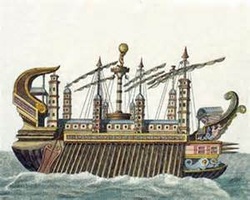 Anchent mathematician and ronound engineer, Archimedes (287-212 BC) was the go to guy for the latest innovations. King Heiro II contracted Archimedes to build the largest ship of the time, the Syracusia. The massive ship was used for luxury, travel, transportation of goods and was even used as a naval war ship. The ship was very luxurious as it accomodated 600 people and incorporated a fully decorated garden, gymnasium and a temple dedicated to the goddess Aphrodite. The ship was so large that Archimedes was faced with the task of keeping it afloat. The ship took on water through it's hull which is located at the very bottom.
To solve this problem, Archimedes invented the water screw (aka screw pump) to bail out water and keep the ship afloat. The pump was operated by hand and very successful, so successful that the simple machine started making it's debut in irigation canals across the world. The water screw is still commonly used today in coal mines, electricity generation, transportation of grains, etc. Europe uses the water screw in reverse as means of generating electricity. When water flows through the screw from higher levels to lower levels, the weight of the water pushes the blades down and forces the screw to rotate generating electricity. This is a great resource of electricity as it requires no energy input, simply the flow of water and gravity. This machine can also be seen at Seaworld in San Diego on the water ride, the ship wreck rapids.
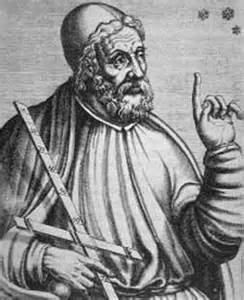 Brief History
Eudoxus was a Greek astrnonmer and mathematician. Fastenated by the stars, Eudoxus had a passion and interest in Astronomy. At age 23 Eudoxus commuted to Athens to attend the Academy and study with the students of Socrates. With the funding provided by his friends and colleagues, Eudoxus traveled to Africa to persue his study of astronomy and mathematics. After several months in Africa, Eudoxus traveled to the southern shore of the Sea of Marmara where he established his school and gained many pupils of his own. Returing to the Academy with his many of his pupils, Eudoxus lived the rest of his days inspiring brillient minds of math and science, including Aristotle.
Method of Exhaustion
Setting the stage for calculus, Eudoxus derived the theory of exhaustion. The theory of exhaustion is an iterative process that determines the area and volume of shapes by inscribing the shape inside of a regular polygon and with each iterate, double the number of sides of the polygon. As the iterations increase, the difference in area of the nth and (n-1)th terms tend toward a value (the difference gets smaller and smaller until it is negligable.) This method of describing areas set the stage for the limit, however the method of exhaustion does differ from the limit in that exhaustion does not use the notion of "infinity"; instead exhaustion operates with a finite numer of interations (a number that we can count.)
Anchient Mesopotamia
The Greek term Mesopotamia meaning, "land between two rivers: is located between the Tigris and the Euphrates rivers. Today, we know this region as Iraq. Having a mathematical spohisticaton far ahead of their time, the Babylonians famously used the base 60 numeral system, or otherwise known as the sexagesimal numeral system. This unique number system first origionated in the 3rd millennium BC with the Sumerians and was inherited by the Babylons. Fascinated with astronomy and in need of a number system capable of making sophisticated computations, the Babylonians used the base 60 system to create their lunar calendar.
Notation
Base 60 is a positional number system that operates using powers of 60 rather than ten. This means that the base 60 system had 59 units as opposed to our 9, and each base unit has a uique symbolic representation created with the base symbols (INSERT). The former represented multiples of 1 and the latter, multiples of 10. In the decimal system, we use 10 unique base units (including "0") and arrange these units in a particular position in order to represent different numerical values (i.e. 19 and 91 are different in numerical value relative to the base unit's position in the one's and ten's place). Base 60 operates in a similar fashion.
The true reason as to why the mathematically sophisticated Babylonians used the base 60 system is still being studied today, but there is intersting symmetry about this number. For example, 60 has divisior 1, 2, 3, 4, 5, 6, 10, 12, 115, 20, 30 and 60 - in fact, 60 is the smallest integer divisible by all integers from 1 to 6. Today, applications of the base 60 system are commonly associated with time (i.e. 60 minutes per hour, 12 hours in a day, etc.) and agle measures (6 X 60=360 degrees).
|

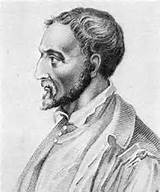
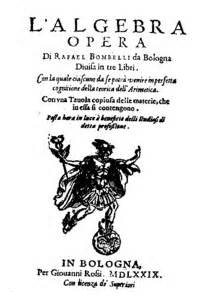






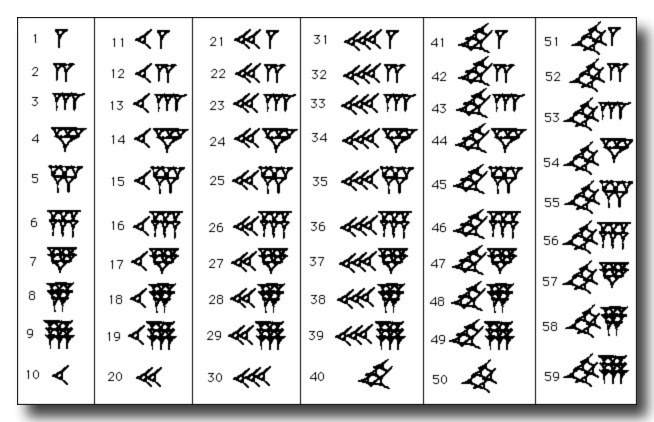
 RSS Feed
RSS Feed